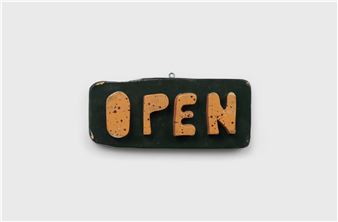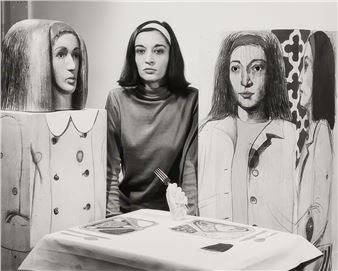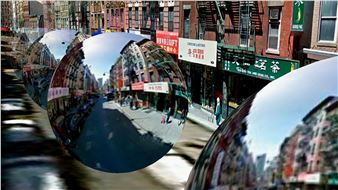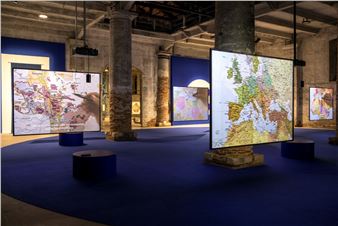The Cold Gaze: Germany in the 1920s
Coming this fall, The Cold Gaze: Germany in the 1920s is a lavish exhibition about the remarkable movement in German art and culture known as New Objectivity. Moreover, an “exhibition within the exhibition” will present the work of the German photographer August Sander from the same period. 600 works and documents by 90-plus artists will occupy Louisiana’s South Wing for the first major exhibition ever in Denmark about art and culture in 1920s Germany. In addition to painting, drawing and photography, the exhibition will feature architecture, design, film, theatre, literature and music in a sweeping multidisciplinary panorama of the compelling cultural production of the Weimar Republic.
At the heart of the exhibition is New Objectivity (Neue Sachlichkeit), the striking art movement of the period, known for its sober realism, biting satire and clinical gaze. In addition, we present an extensive special look at the German photographer August Sander (1876-1964) and his pioneering documentary “group portrait” of modern people.
In the aftermath of World War I, Germany goes through a turbulent period of deep poverty and political unrest concurrent with the brief flourishing of democracy during the Weimar Republic (1918-1933), before the culture of freedom is snuffed out with the Nazis’ rise to power in 1933. This exhibition charts the outlines of the rich and broadly unfolding cultural life of the years between the two world wars.
In thematic, interdisciplinary chapters, the movement New Objectivity is explored as an artistic concept in a society marked by tumultuous upheaval and clashing forces – social, political and economical. To capture their times, the artists of the movement represented the workaday lives of ordinary people in a realistic, sober style stripped of sentiment and often with a high level of detail.
Life in the big city, modern, functionalist architecture, rapid industrialization and technical advances, feverish nightlife with cabarets and night clubs, sexual liberation, promiscuity and prostitution, alongside socially critical depictions of the tough living conditions of the working class, the new role of women and the decadent lifestyle of the upper class – all are central themes and subjects explored in this exhibition across artistic expressions, illuminated by a wealth of historical documentation.
An exhibition within the exhibition showcases a rich selection from People of the 20th Century, the life’s work of the German photographer August Sander (1876-1964). Starting in 1919 with the ambition to create an encyclopaedic and comparative documentation, Sander photographs anonymous Germans from all walks of life in a simple and sober manner, presenting distinct “types” while allowing the unique character of each individual to shine. As a whole, this monumental image-atlas of more than 600 black and white photographs is a unique group portrait of German society during the Weimar Republic and a classic in the history of European art and photography.

Recommended for you
Coming this fall, The Cold Gaze: Germany in the 1920s is a lavish exhibition about the remarkable movement in German art and culture known as New Objectivity. Moreover, an “exhibition within the exhibition” will present the work of the German photographer August Sander from the same period. 600 works and documents by 90-plus artists will occupy Louisiana’s South Wing for the first major exhibition ever in Denmark about art and culture in 1920s Germany. In addition to painting, drawing and photography, the exhibition will feature architecture, design, film, theatre, literature and music in a sweeping multidisciplinary panorama of the compelling cultural production of the Weimar Republic.
At the heart of the exhibition is New Objectivity (Neue Sachlichkeit), the striking art movement of the period, known for its sober realism, biting satire and clinical gaze. In addition, we present an extensive special look at the German photographer August Sander (1876-1964) and his pioneering documentary “group portrait” of modern people.
In the aftermath of World War I, Germany goes through a turbulent period of deep poverty and political unrest concurrent with the brief flourishing of democracy during the Weimar Republic (1918-1933), before the culture of freedom is snuffed out with the Nazis’ rise to power in 1933. This exhibition charts the outlines of the rich and broadly unfolding cultural life of the years between the two world wars.
In thematic, interdisciplinary chapters, the movement New Objectivity is explored as an artistic concept in a society marked by tumultuous upheaval and clashing forces – social, political and economical. To capture their times, the artists of the movement represented the workaday lives of ordinary people in a realistic, sober style stripped of sentiment and often with a high level of detail.
Life in the big city, modern, functionalist architecture, rapid industrialization and technical advances, feverish nightlife with cabarets and night clubs, sexual liberation, promiscuity and prostitution, alongside socially critical depictions of the tough living conditions of the working class, the new role of women and the decadent lifestyle of the upper class – all are central themes and subjects explored in this exhibition across artistic expressions, illuminated by a wealth of historical documentation.
An exhibition within the exhibition showcases a rich selection from People of the 20th Century, the life’s work of the German photographer August Sander (1876-1964). Starting in 1919 with the ambition to create an encyclopaedic and comparative documentation, Sander photographs anonymous Germans from all walks of life in a simple and sober manner, presenting distinct “types” while allowing the unique character of each individual to shine. As a whole, this monumental image-atlas of more than 600 black and white photographs is a unique group portrait of German society during the Weimar Republic and a classic in the history of European art and photography.
Artists on show
- Albert Renger-Patzsch
- Alexander Kanoldt
- Anita Ree
- August Sander
- Bertolt Brecht
- Carl Grossberg
- Christian Schad
- Ernst May
- Franz Lenk
- Franz Radziwill
- Franz Wilhelm Seiwert
- Georg Scholz
- George Grosz
- Grethe Jürgens
- Jeanne Mammen
- Karl Völker
- Kurt Weill
- Lotte B. Prechner
- Lotte Laserstein
- Marcel Breuer
- Margarete Schütte-Lihotzky
- Otto Dix
- Rudolf Schlichter
- Walter Gropius
- Xaver Fuhr
Contact details

Related articles
Our revised and refreshed pick of this year’s standout exhibitions, from Cézanne in London to Alice Neel in Paris and Jeff Koons on the Greek island of Hydra
A Copenhagen exhibition offers a rich view into the creative production and daily life in the Weimar Republic, with its glamour and its grotesquerie.

 ARTISTS
ARTISTS















